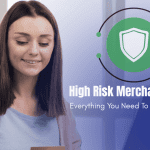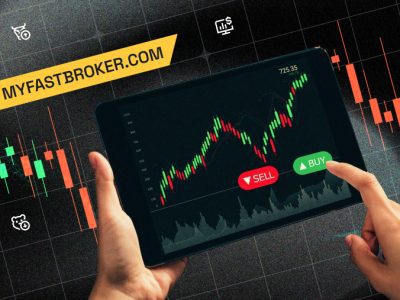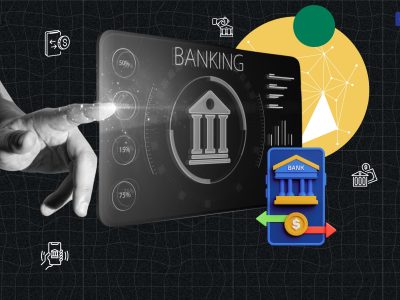Why More UK SMEs Are Turning To Secured Business Loans In 2025

UK SMEs (small and medium-sized businesses) in 2025 are dealing with a more complicated financial landscape than ever before.
With rising interest rates, lenders becoming more cautious, and the economy continuing to adjust to post-pandemic changes, owners are becoming even more strategic about financing growth, managing cash flow, and dealing with uncertainty.
Most small and medium-sized businesses in the past have depended on unsecured business loans because they are quick and convenient to obtain.
More people are, however, choosing secured loans this year because they are safer and cheaper. What triggered the shift?
This article considers the main reasons why the change is taking place and how secured lending is proving to be the most suitable option for small and medium-sized businesses in the UK.
Secured business loans are still valuable in some situations, but securing funds may be able to give companies the long-term stability and growth they need.
The Current Finance Landscape In The UK SMEs
The needs of small and medium-sized businesses in the UK are growing as we move into 2025, and so are their concerns.
Business costs are still high because of sky-high energy prices, inflation, and supply chain volatility. They are also looking for ways to grow, expand into new markets, or invest in technology. All of which need easy access to capital.
But it is not as simple to borrow that money these days. Banks and other creditors are more conservative, especially when lending on unsecured terms.
Stricter credit scoring systems have reduced the number of unsecured loans made, especially for younger or less profitable enterprises.
Due to this, businessmen are weighing their financial alternatives again. Instead of seeking quick cash, the majority of people are focusing on affordability, flexibility, and long-term sustainability. This is pushing them towards secured borrowing.
Secured loans were previously the domain of big businesses. Still, now they can be a good alternative for small businesses that want to stay steady in a lending environment that is becoming more conservative.
Limitations Of Unsecured Business Loans
It is explained that most unsecured business loans are quick and simple to acquire. Companies looking for working capital for short terms or need money urgently prefer this option as it does not include collateral.
This makes the process of approval quicker and the documents less complicated. However, in 2025, it will be harder to ignore the imperfections of unsecured loans.
Lenders have raised interest rates on most unsecured products because they are taking a greater risk. The maximum limits of the loans are also set more conservatively, and that may be inadequate for UK SMEs that are growing.
Payment terms are normally shorter, which makes cash flow tighter.
And the conditions for qualification are tighter, especially for firms that might not consistently make profits or that do not have a lengthy credit history.
Most business owners have now changed their minds due to this turn of events. An unsecured business loan might still be good for patch-up work.
But it’s not necessarily the best choice for big-ticket investments, refinancing, or diversification. With rising borrowing costs, small- and medium-sized businesses need more affordable, scalable options. That’s where secured loans come in.
Why Secured Loans Are Gaining Popularity?
More and more UK SMEs are now using secure loans as a result of the rising cost and limitations on unsecured lending.
It is no wonder. Secured loans give lenders greater security by placing business assets in pledge as collateral. This, in turn, provides the entrepreneur with better terms on the lending.
This generally means lower interest rates, bigger loans, and longer terms in 2025. These are three important benefits for companies that are setting up for the future or growing.
Secured loans give small and medium-sized businesses access to money that they can not get with unsecured loans. Their advantage lies in the fact that they have valuable material possessions like property, machinery, or vehicles.
Even secured credit companies are getting better approval rates when they are able to offer collateral. This is opening up secured lending to be more accessible and advantageous, especially in a risk-conscious lending market.
The majority of small and medium businesses are realizing that they must weigh the advantages and disadvantages.
If making some quick cash is the only thing on your mind, an unsecured business loan may still be worth it. But for those who require stability, low charges, and growth, secure funding is now the better option.
What Assets Are SMEs Using To Secure Loans?
In 2025, UK SMEs are increasingly using secured lending due to the flexibility of collateral available. You don’t need to own commercial property to be eligible — lenders now consider a vast range of tangible and financial assets.
Some of the most popular include:
- Commercial property or real estate – One of the most secure forms of collateral, with access to high amounts of loans.
- Machinery or vehicles – Particularly ideal for manufacturing, construction, and logistics companies.
- Stock or inventory – Wholesale and retail companies normally utilize leftover stock to obtain working capital.
- Receivables or outstanding invoices – Relatively common in invoice financing, where receivables are utilized to enhance cash flow.
Case Study Or Example: A Business Choosing Secured Over Unsecured
In 2025, look at this illustration of how secured lending is facilitating more informed financing choices for UK small and medium-sized businesses.
Let’s imagine a logistics company based in Manchester that needed £250,000 to buy more trucks and cover more customers.
At first, they applied for an unsecured business loan but were granted only £90,000 at a very high rate of interest and 12 months for repayment. It was not enough, and the repayments would have put them under tight cash flow every month.
They did not, however, borrow from such a lender. They went to a lender who offers secure loans and collateralized three commercial vans.
This was how they got the full £250,000 at a much lower interest rate, repayable over a five-year term that was easy to pay month by month. The loan enabled them to grow without losing money or taking too much risk.
This is an example of a trend that is becoming more common: businesses can get higher, lower-interest loans by using assets they already have, much better than an unsecured loan.
Is There Still A Role For Unsecured Business Loans In 2025?
While securing loans is on the rise, flexible unsecured business loans remain crucial to small and medium-sized enterprises, especially those with rapidly moving industries or few assets.
They remain most suited for:
- Short-term liquidity needs
- Early urgency, like flash stock deals or seasonal surges
- Younger firms with no valuable collateral
- Consulting, technology, or services firms, where there are few tangible assets
Their biggest strength is how quickly and agile they are. An unsecured loan is a quick means to get cash when you urgently need it and don’t have time to estimate your collateral, although it pays you more.
Most small and medium-sized businesses in 2025 are using a blend of secured and unsecured loans.
They use secured loans for major planned investments and unsecured loans for immediate tactical financing.
Utilized together in the correct way, both loans can lead to an equilibrium and flexible funding strategy fitting for short and long-term stability.
Final Thoughts: Making The Right Choice For Your SME
As the economy changes, UK SMEs are becoming more strategic in their application of borrowing money, with a focus on longer-term stability over shorter-term speed.
Unsecured loans remain convenient, especially for immediate or short-term needs. But the trend towards secured lending is symptomatic of a wider trend. Business owners want lower prices, more sources of funding, and more fixed repayment terms.
A secured loan can give your company a much greater degree of freedom and financial resilience than an unsecured business loan ever will, especially if it has valuable assets like vehicles, property, or stock.
Funding Guru makes these options available to small and medium-sized businesses. Our team can help you decide on the best choice for your stage of growth, whether it’s the right time to delve into asset-backed lending or just weighing the pros and cons of either situation.
Talk with one of our experts today and see how strategic funding can help you confidently grow in 2025.
























